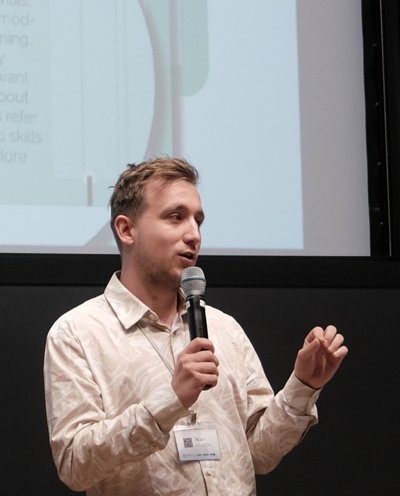Design Your Life - Bringing the Autistic Lifeworld to Supportive Technology Design
Niels van Huizen is a PhD student in the Department of Human Centered Design. (Co)Promotors are prof.dr.ir M.C. van der Voort and dr. J. van Dijk from the Faculty of Engineering Technology and prof.dr. W.G. Staal from Leiden University.
 Autism is lifelong, and autistic individuals can face challenges at all stages of their lives. These challenges may be intensified during the transition to adulthood, in which new expectations arise around education, work, and personal relationships. Autistic young adults experience poor progress in these areas, overall facing higher rates of unemployment, fewer intimate relationships, and increased incidence of depression and burnout. Supportive technology can be of help here, enabling young adults to manage everyday challenges related to sensory processing, communication, and/or executive functioning. The uptake remains limited, however, in part due to the prevailing medical model of autism on which many of these devices are based. In accordance, low- and hi-tech technologies attempt to make autistic individuals behave in more neurotypical ways. These technologies – as well as the medical model of autism – have been criticised for the unnecessary pathologisation of certain autistic traits and the reluctance to consider environmental factors that contribute to every-day challenges.
Autism is lifelong, and autistic individuals can face challenges at all stages of their lives. These challenges may be intensified during the transition to adulthood, in which new expectations arise around education, work, and personal relationships. Autistic young adults experience poor progress in these areas, overall facing higher rates of unemployment, fewer intimate relationships, and increased incidence of depression and burnout. Supportive technology can be of help here, enabling young adults to manage everyday challenges related to sensory processing, communication, and/or executive functioning. The uptake remains limited, however, in part due to the prevailing medical model of autism on which many of these devices are based. In accordance, low- and hi-tech technologies attempt to make autistic individuals behave in more neurotypical ways. These technologies – as well as the medical model of autism – have been criticised for the unnecessary pathologisation of certain autistic traits and the reluctance to consider environmental factors that contribute to every-day challenges.
In response, this thesis explores an alternative neurodiversity approach to supportive technology design. Rather than viewing autism as a ‘disorder’, the neurodiversity model understands autism as an altogether different way of being. This helps to formulate a new goal for supportive technology design: not to compensate for a perceived ‘deficit’, but to become a supportive, integral part of the embodied practices of autistic end users. Neurodiversity implies increased attention in the design process to context, interaction, and lived experience.
To this end, the scientific contribution this research seeks to make is four-fold. First, it seeks to thoroughly understand the full experience of being autistic, and how supportive technologies can seamlessly integrate into that experience. Second, it explores how to put autistic individuals in charge of their own design process. Third, it examines how exactly supportive technology design can help empower autistic individuals, focusing also on the potentially long-lasting impact of the design process itself. Finally, it explores how design research as a scientific discipline can offer a critical perspective to enrich our conceptual understanding of autism. These four research objectives were examined in the overarching Design Your Life research project, centred around a toolkit that helps end users design their own supportive technologies.
This research shows that the neurodiversity model offers a promising new perspective in the design of supportive technology for autistic young adults, and that autistic young adults are also well capable of imagining their own creative solutions. Participants in this research ideated personalised, unexpected devices to meet their support needs, albeit sometimes hampered by the lack of technical knowledge and machinery. This research also reveals a wide range of ways in which supportive technology design can contribute to empowerment – as conversation mediators, sense-making tools, and as ‘knowledge objects’; to help non-autistic peers better understand what it means to be autistic. Overall, this research’s findings introduce new valuations of supportive technology design by autistic young adults, which may also inspire healthcare professionals to explore design-oriented approaches in their care practices.




